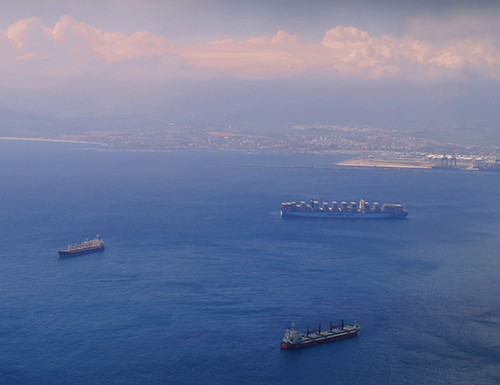An International Maritime Organization (IMO) working group has agreed on a set of draft guidelines to support mandatory measures to cut the carbon intensity of all ships.
The proposed mandatory measures have already been approved by IMO’s Marine Environment Protection Committee (MEPC) and are expected to be adopted when the Marine Environment Protection Committee (MEPC) meets for its 76th session from 10 to 17 June.
The proposed amendments to the International Convention for the Prevention of Pollution from Ships (MARPOL) would require ships to combine a technical and an operational approach to reduce their carbon intensity, according to IMO’s announcement.
“This is in line with the ambition of the Initial IMO GHG Strategy, which aims to reduce carbon intensity of international shipping by 40% by 2030, compared to 2008,” pointed out IMO.
The new measures are the technical requirement to reduce carbon intensity, based on a new Energy Efficiency Existing Ship Index (EEXI); and the operational carbon intensity reduction requirements, based on a new operational carbon intensity indicator (CII).
The dual approach aims to address both technical (how the ship is equipped and retrofitted) and operational measures (how the ship operates).
The Intersessional Working Group on Reduction of GHG Emissions from Ships (ISWG-GHG 8), which met remotely from 24-28 May, agreed, for consideration by the Committee, with a view to adoption on the following comprehensive set of guidelines accompanying the new requirements:
- draft 2021 Guidelines on the method of calculation of the attained energy efficiency existing ship index (EEXI);
- draft 2021 Guidelines on survey and certification of the energy efficiency existing ship index (EEXI);
- draft 2021 Guidelines on the shaft / engine power limitation system to comply with the EEXI requirements and use of a power reserve;
- draft 2021 Guidelines on operational carbon intensity indicators and the calculation methods (CII Guidelines, G1);
- draft 2021 Guidelines on the reference lines for use with operational Carbon Intensity Indicators (CII reference lines guidelines, G2);
- draft 2021 Guidelines on the operational carbon intensity reduction factors relative to reference lines (CII Reduction factor Guidelines, G3);
- draft 2021 Guidelines on the operational Carbon Intensity rating of ships (CII rating guidelines, G4).
The amendments to MARPOL Annex VI and this accompanying detailed set of guidelines provide important tools for Administrations and industry to implement the new requirements, and building blocks for future energy efficiency measures.
CII reduction factor
Under the draft MARPOL amendments, ships of 5,000 gross tonnage and above (the approximately 30,000 ships currently already subject to the requirement for data collection system for fuel oil consumption of ships) have to determine their required annual operational carbon intensity indicator (CII). The ship’s CII determines the annual reduction factor needed to ensure continuous improvement of the ship’s operational carbon intensity within a specific rating level.
The actual annual operational CII achieved (attained annual operational CII) would be required to be documented and verified against the required annual operational CII. This would enable the operational carbon intensity rating to be determined.
A key element in the draft guidelines is the proposal for the CII reduction factor (the ‘Z-factor’), included in the draft guidelines on the operational carbon intensity reduction factors relative to reference lines (G3).
The reduction rates are intended to achieve the levels of ambitions set out in the Initial Strategy, in particular, the 2030 level of ambition of reducing carbon intensity of international shipping by at least 40% by 2030, compared to 2008.
The group put forward to the Committee the concept of a phased approach, which would see an annual successive carbon intensity reduction rate of –2% compared to the 2019 reference line from 2023 (when the MARPOL amendments would enter into force) through to 2026 – at which time a review required under the draft MARPOL amendments would be undertaken to further strengthen the annual reduction rate.
CII rating
The draft 2021 Guidelines on the operational Carbon Intensity rating of ships (CII rating guidelines, G4) set the method to determine the rating boundaries.
The rating would be given on a scale – operational carbon intensity rating A, B, C, D or E – indicating a major superior, minor superior, moderate, minor inferior, or inferior performance level. The performance level would be recorded in the ship’s Ship Energy Efficiency Management Plan (SEEMP).
Under the draft MARPOL amendments, a ship rated D for three consecutive years, or E, would have to submit a corrective action plan, to show how the required index (C or above) would be achieved.
IMO said that administrations, port authorities and other stakeholders as appropriate, are encouraged to provide incentives to ships rated as A or B.







